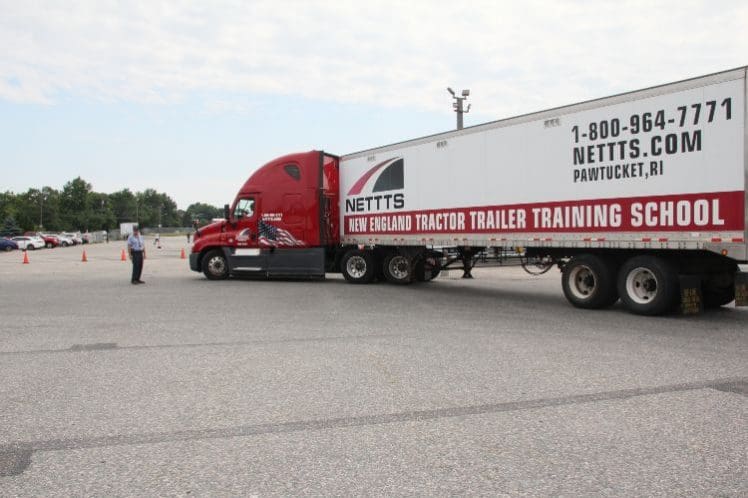
CDL stands for Commercial Driver’s License. In order to drive a commercial motor vehicle in the United States, the driver must hold a valid Commercial Driver’s License, or “CDL”.
Like a regular (Class D), non-commercial driver license, CDL’s are issued by the state where the driver lives. It’s the federal government that establishes CDL requirements that all states must follow, but states often have their own minimum standards that CDL applicants must meet and these standards vary from state to state.
There are a few different types of commercial motor vehicles that require a driver to hold a CDL. They can include any vehicle that exceeds a maximum operating weight of 26,000 pounds, a vehicle that is designed to transport 16 or more people (including the driver), and a vehicle that is used to haul hazardous materials. Commercial vehicles are divided into different categories based on size, weight, and function. Each requires a different CDL—Class A, or B— both of which means passing a different set of knowledge and skills tests.
Class A CDL
A Class A CDL allows for the operation of any combination of vehicles which has a gross combination weight of 26,001 pounds or more, provided the gross vehicle weight of the vehicle(s) being towed is more than 10,000 pounds. (Gross Combination Weight is the maximum allowable combined weight of a road vehicle, the passengers, and cargo in the tow vehicle, plus the weight of the trailer and cargo in the trailer.) A common Class A vehicle is a tractor trailer, also known as a semi-truck, big-rig or 18-wheeler.
Class B CDL
A Class B CDL is required to operate any single vehicle with gross vehicle weight of 26,001 pounds or more, or any such vehicle towing a vehicle not in excess of 10,000 pounds. Examples of Class B vehicles include buses, dump trucks, and cement trucks. Class A CDL holders are able to drive Class B rated vehicles, but Class B CDL holders are not allowed to drive Class A vehicles.
Endorsements
Within each of the CDL classes, drivers can also get various endorsements which allow them to drive specific kinds of vehicles, or to use them in certain ways. For example, endorsements are required to operate double/triple trailers (trucks pulling multiple trailers at once), buses, vehicles with air brakes, and vehicles carrying bulk liquids, gases, and/or hazardous materials. Endorsements are not required but allow CDL drivers to operate even more types of vehicles, and are earned by the driver passing a specific knowledge and/or skills test for that special endorsement. If a driver does not pass an endorsement test, or obtains an endorsement in a one vehicle class but not another, certain restrictions can be applied to their CDL.
Commercial Learners Permit (CLP)
Once a driver figures out the kind of vehicle and driving they would like to be licensed and endorsed for, the next step is a Commercial Learners Permit (CLP). A CLP allows drivers to practice behind the wheel of a commercial vehicle on public roads with a qualified CDL holder sitting next to them. Getting a CLP requires passing all the knowledge tests and medical requirements for the kind of vehicle the driver intends to use.
Drivers are required to possess the CLP for at least 14 days before taking the CDL Skills Test. Some states require the successful completion of CDL training prior to testing. In order to obtain a CDL, drivers must pass a general knowledge test, any applicable endorsement tests, and all three parts of the Skills Test: Vehicle Inspection Test (Pre-trip inspection), the Basic Controls Test (backing maneuvers), and the Road Test. As of February 2022 all drivers are required to successfully Entry-Level Driver Training from an approved training program provider. Approved providers can be found on the FMCSA Training Provider Registry. All NETTTS locations can be found on this list of approved training providers.
Could I lose my CDL?
With Class A or B Commercial Driver License (CDL), a driver is able to operate a commercial and private (non-commercial) vehicle (such as their car) under one driver license. However, if the driver commits an offense that requires the suspension or revocation of their driver license, the driver can lose all driving privileges, including commercial driving privileges. A CDL is valid for up to five years, at which point it will need to be renewed by the driver’s state.



